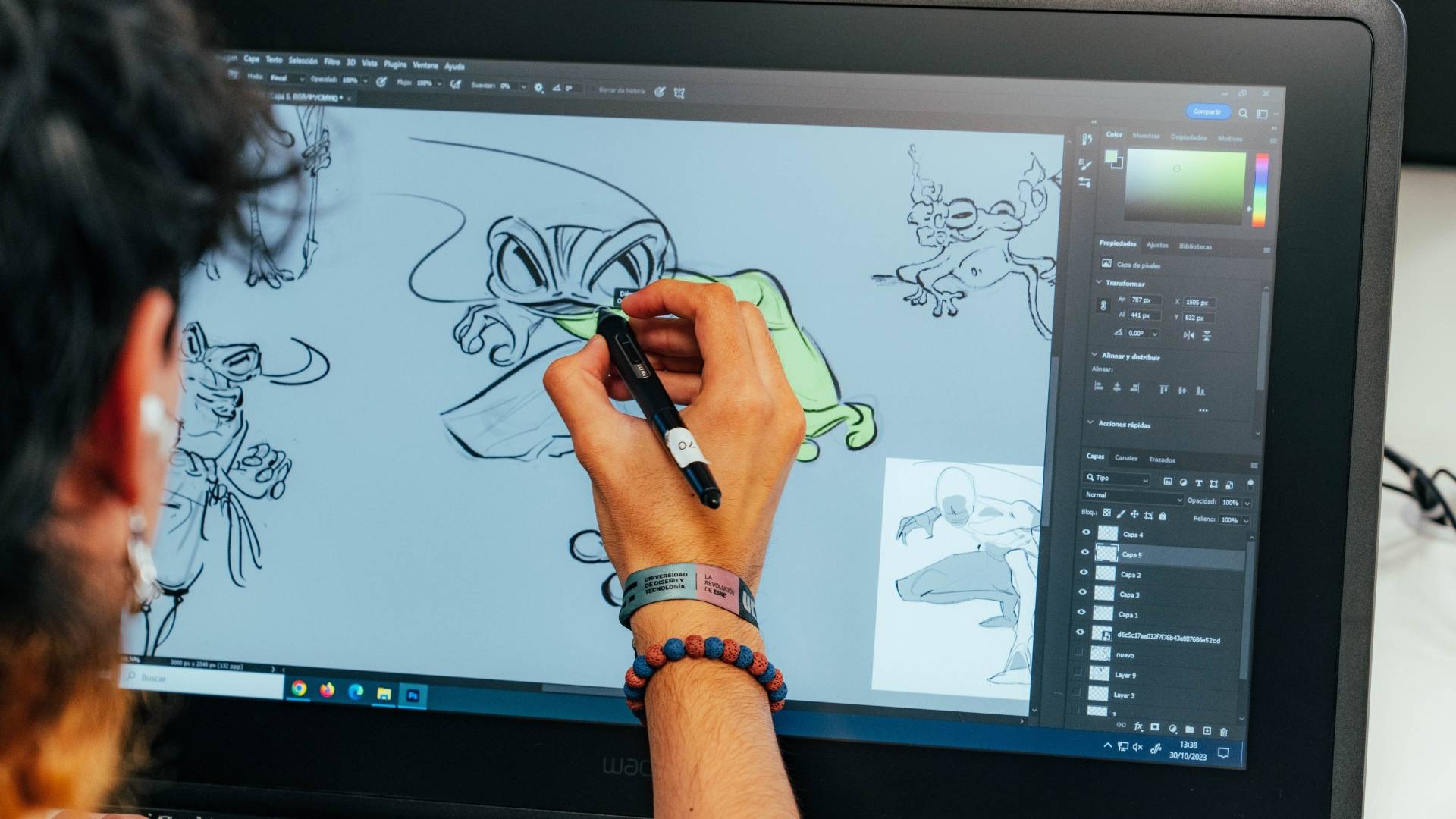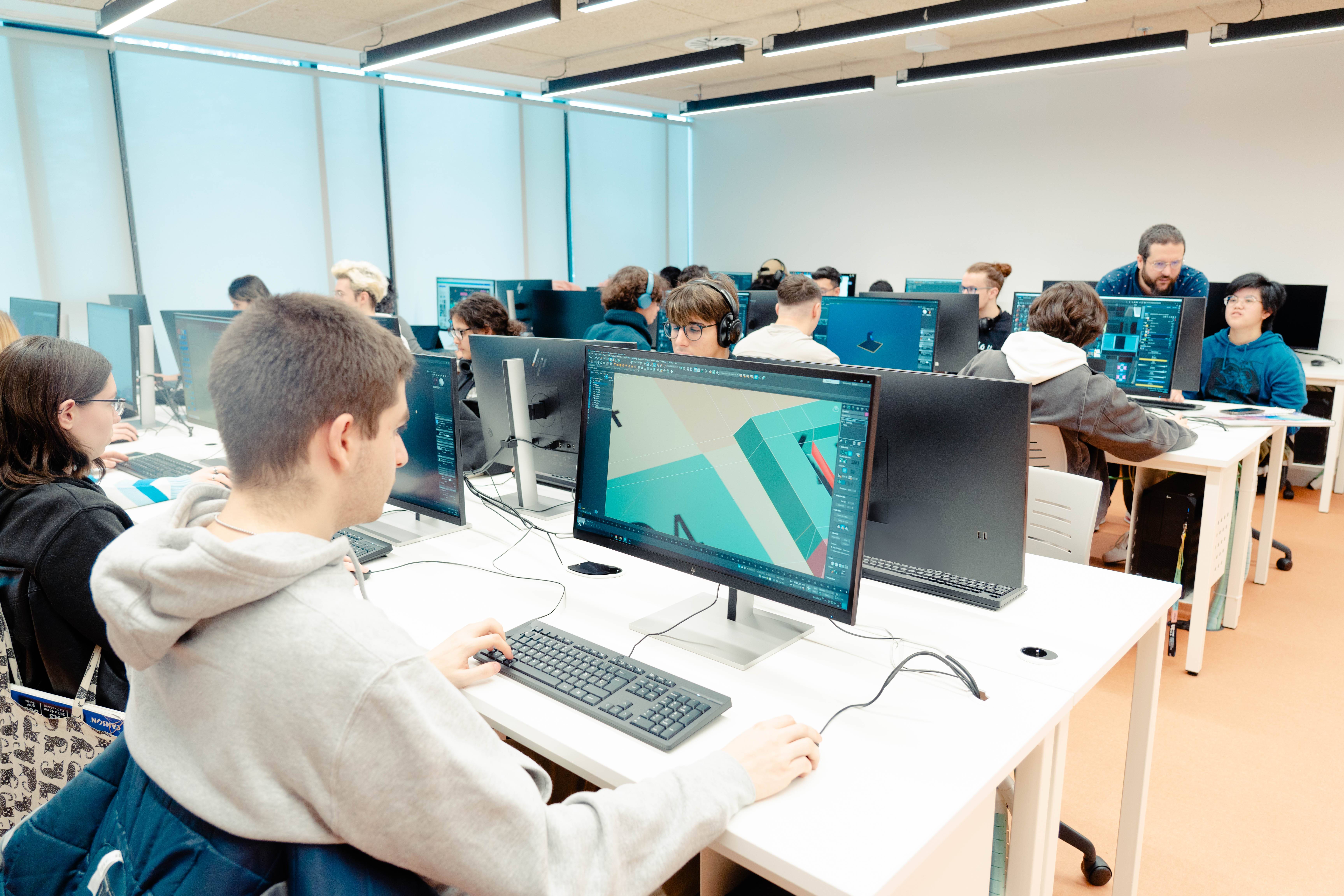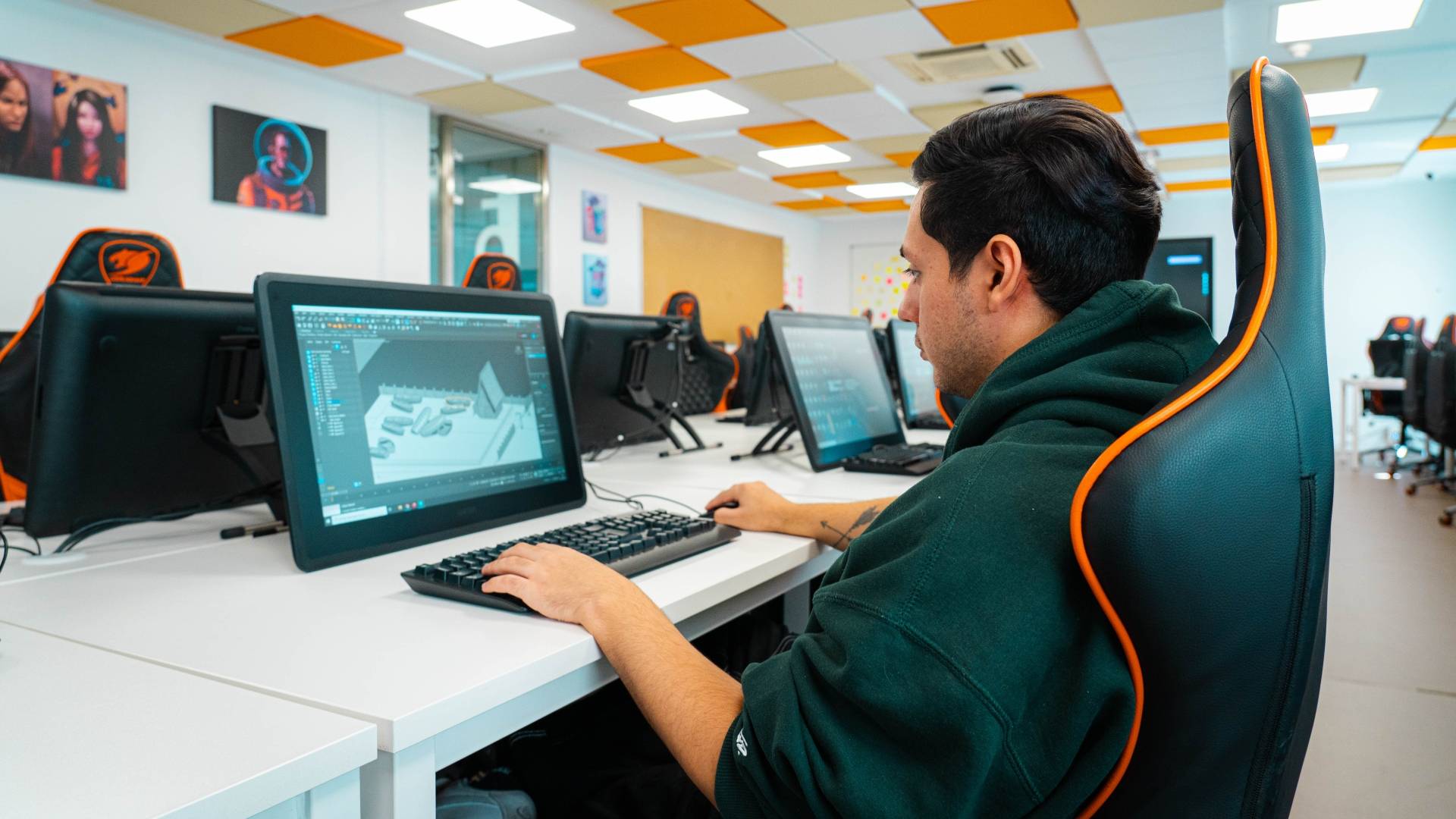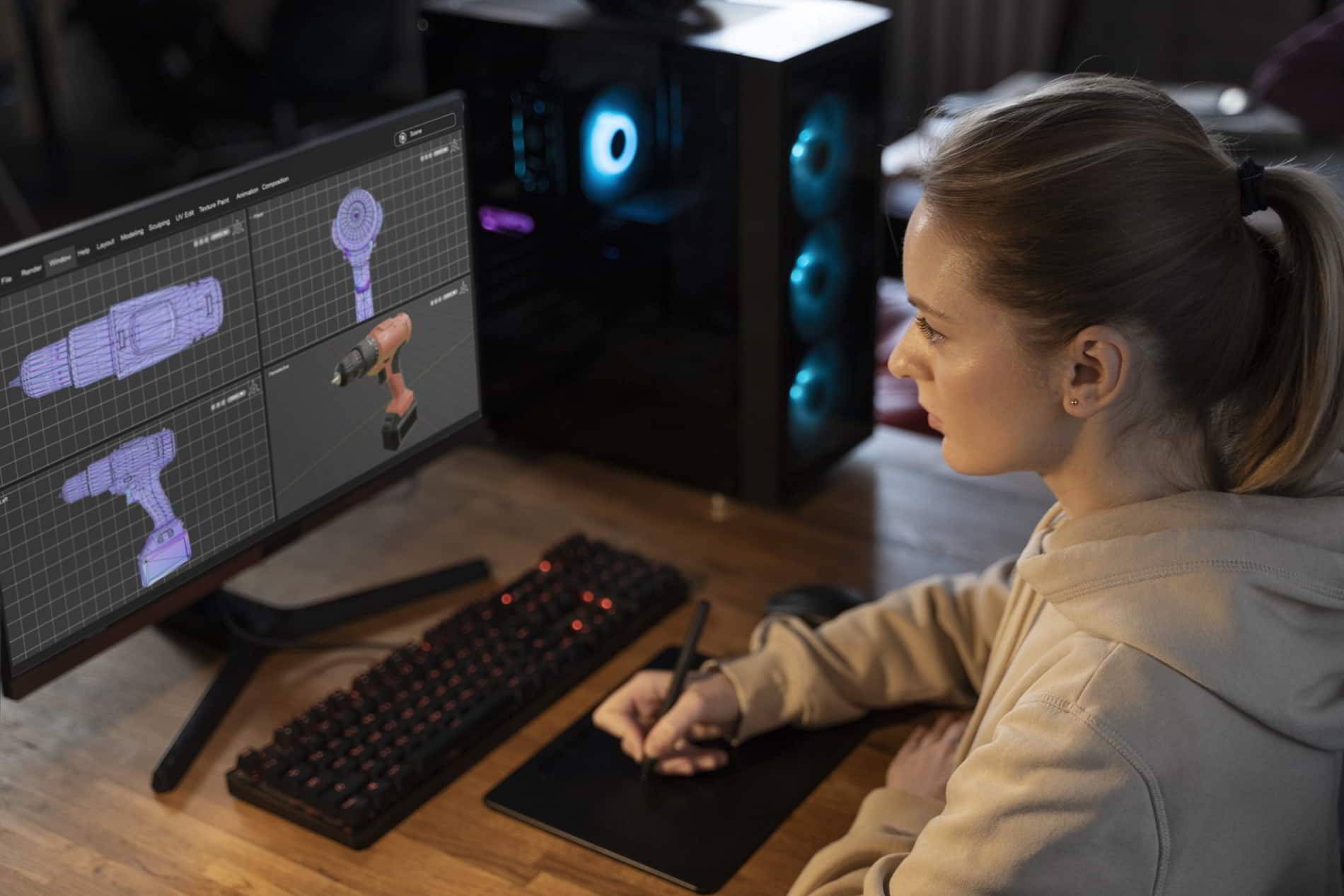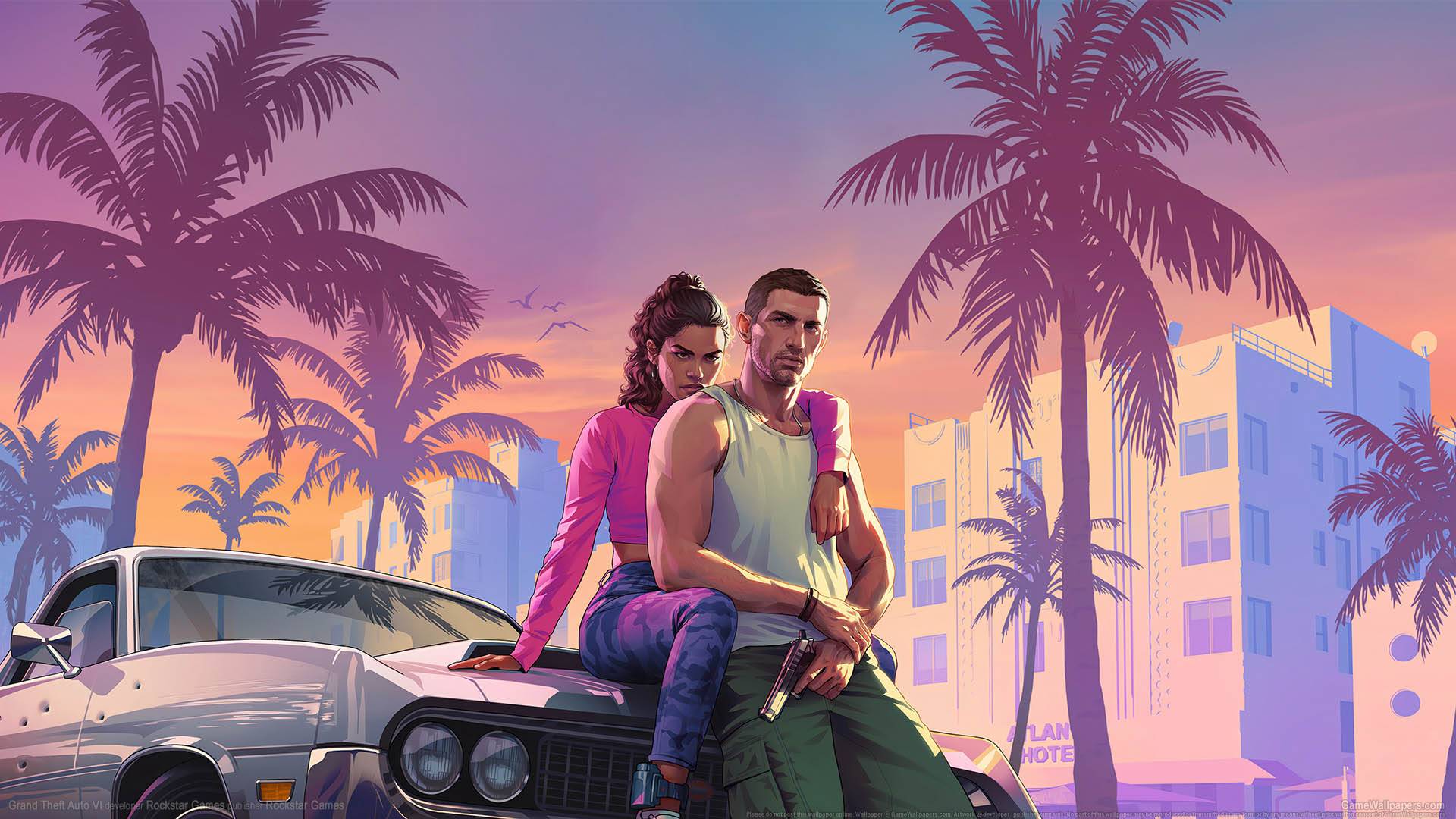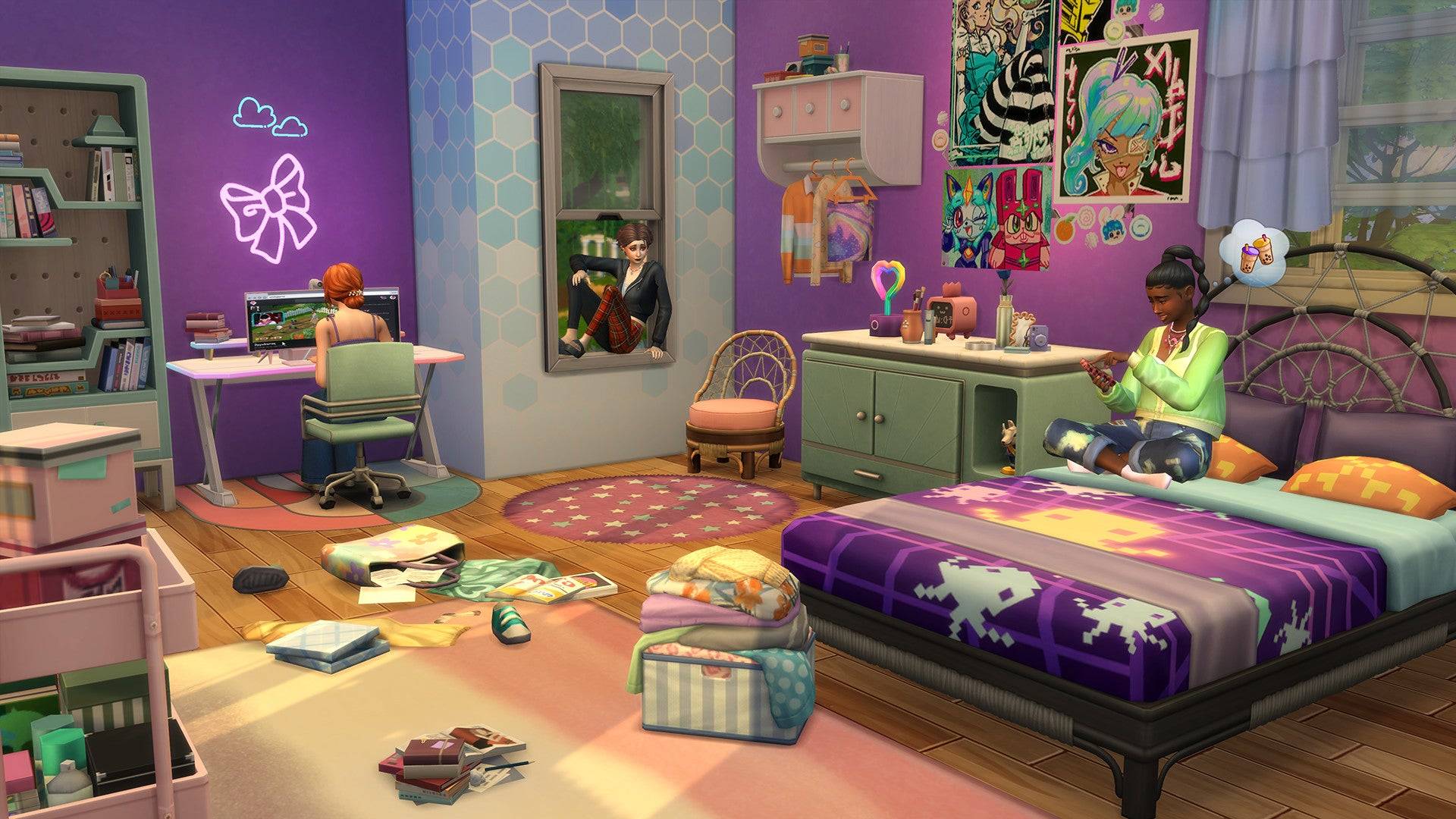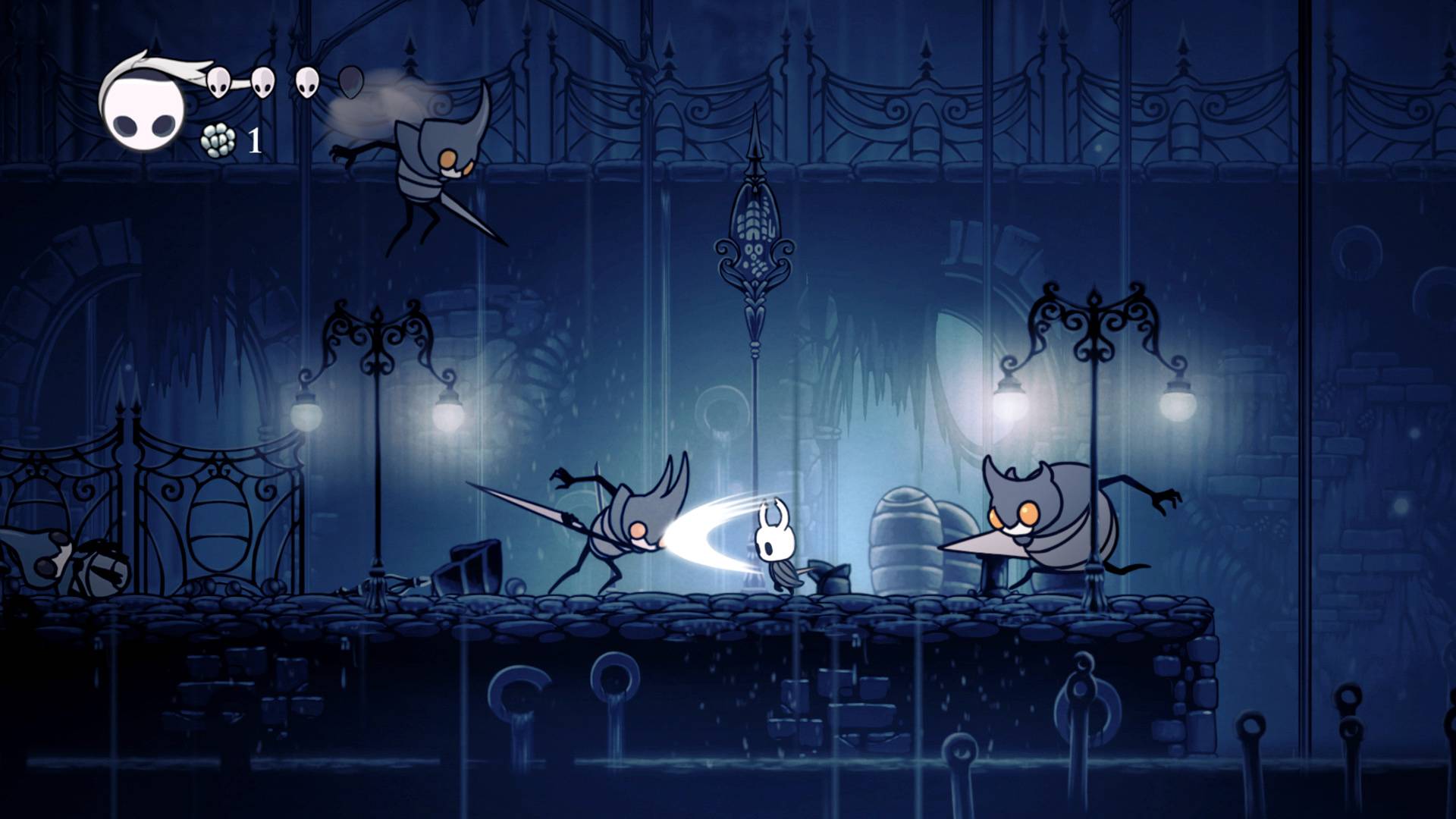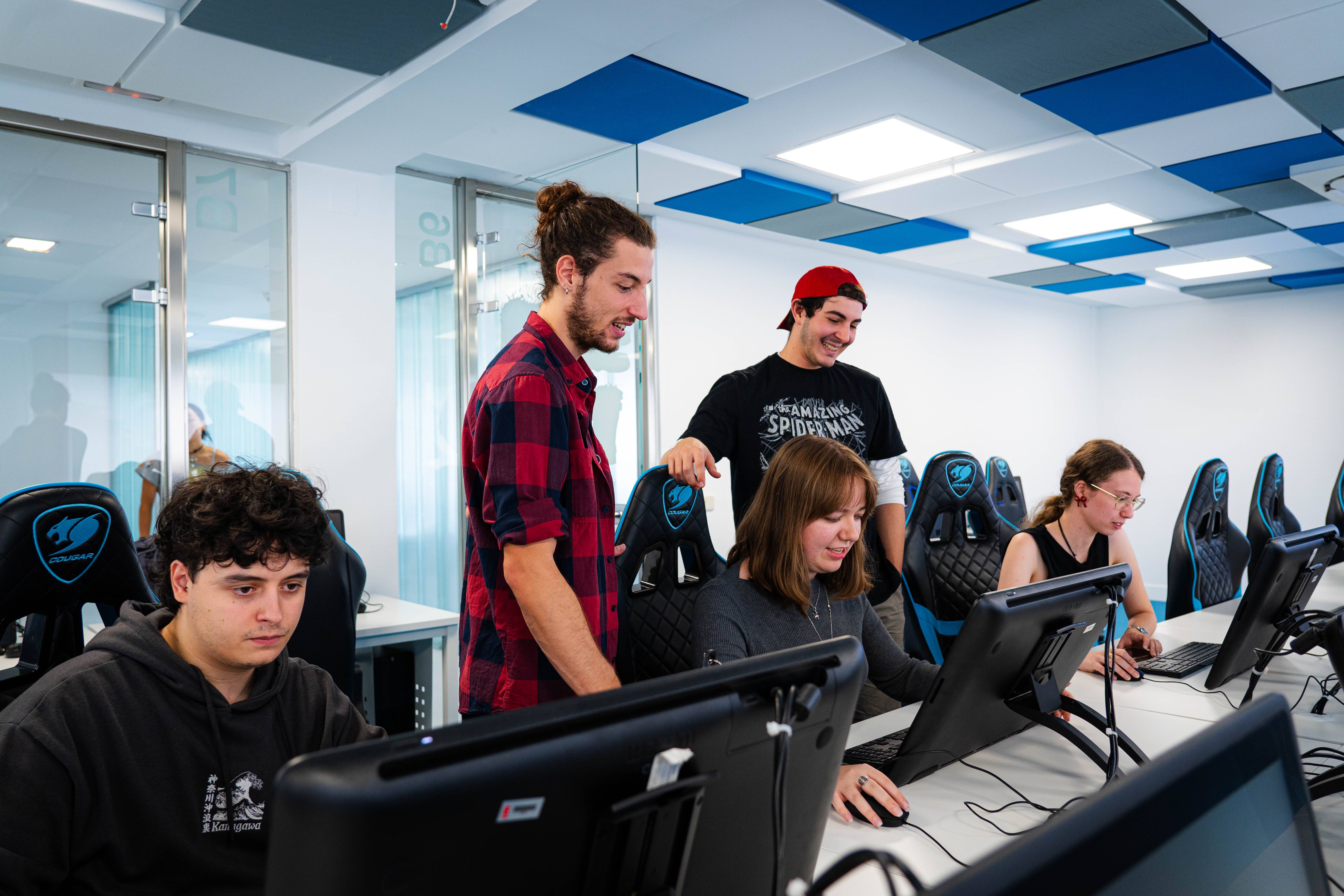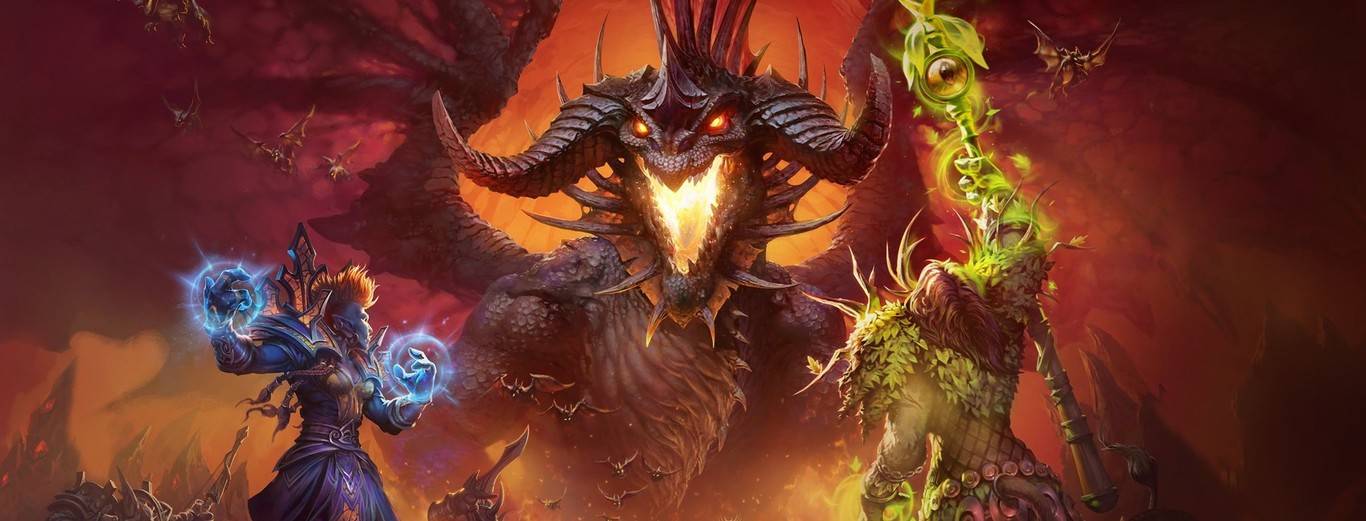How is a video game created?
The development of a video game is a complex and multidisciplinary process that involves a diverse team of professionals. From illustrators and texture designers to scriptwriters and programmers, the creation of a video game requires the collaboration of experts in different areas to achieve a cohesive and engaging final product. In this article, we will explore the main roles and specialisations involved in video game development and how UDIT's Bachelor's Degree in Design and Development of Video Games and Virtual Environments offers a comprehensive training in this field.
The development team in a video game
Art specialists
Artists are responsible for the visual creation of the game. This includes everything from characters and scenarios to visual effects and user interfaces. Specific roles within this specialisation include:
- 3D Modellers: Create the three-dimensional models of characters, objects and scenery.
- 2D Illustrators: Design characters and objects in two dimensions that can then be animated or used as interface elements.
- Animators: Bring characters and objects to life by creating realistic movements and expressions.
- Texture Designers: Create the textures that are applied to 3D models to give them a realistic look.
- Visual Effects (VFX) Artists: Create special effects, such as explosions, particles and other dynamic visual elements.
- Lighting Specialists: Design the lighting of environments to create the right atmosphere and enhance the visual aesthetics of the game.
Game designers
Game designers focus on the structure and mechanics of the game. Their work ranges from narrative to gameplay and user experience. Key responsibilities include:
- Scriptwriters: Develop the game's story and dialogue.
- Level Designers: Create the game's maps and levels, ensuring they are challenging and entertaining.
- Game Mechanics Designers: Define how the game will be played, including rules, reward systems and monetisation mechanics.
- UX/UI Specialists: Design the user experience and game interfaces, ensuring they are intuitive and easy to use.
- Narrative Designers: Responsible for the conceptualisation and development of characters, objects and scenarios within the game's story.
Programmers
Programmers are responsible for bringing the game design to life through code. They work closely with the designers and artists to integrate all elements and ensure that the game runs smoothly. Their roles include:
- Gameplay Developers: Program the game mechanics and ensure that they respond correctly to the player's actions.
- Game Engine Engineers: Work with engines such as Unity or Unreal Engine to develop the technical infrastructure of the game.
- Artificial Intelligence Specialists: Program the AI of non-playable characters so that they behave realistically.
- Database Developers: Manage the game's information and data, such as player profiles and statistics.
- Network Engineers: Ensure that the online components of the game, such as multiplayer, run smoothly and without interruption.
UDIT's Bachelor's Degree in Video Game Design and Development and Virtual Environments
The Degree in Design and Development of Video Games and Virtual Environments at UDIT is one of the most complete and specialised courses in Spain. From the second year onwards, students can begin to specialise in one of the three main specialisations: art, design or programming. This allows students to focus on the area they are most passionate about and prepares them for a successful career in the videogame industry.
Majors: Which one to choose?
Choosing a major can be a challenge, especially if you haven't yet decided which area you would like to focus on. Here is a detailed description of each major and the associated career paths to help you make an informed decision.
Art minor
The Art major is geared towards those who have a passion for visual creation. In this specialisation, students learn about:
- 3D and 2D Modelling: Creating characters, objects and scenery.
- Rendering and Animation: Techniques to bring the visual elements of the game to life.
- Visual Effects (VFX): Creation of special and dynamic effects.
- Interface Design: Creating attractive and functional user interfaces.
- Lighting and Texturing: Techniques to improve the aesthetics and realism of games.
Professional opportunities:
- 3D Artist
- Animator
- Texture Designer
- Visual Effects Artist
- Lighting Specialist
Mention in Design
The design minor focuses on the conceptualisation and structuring of the game. Students acquire knowledge in:
- Scripting and Narrative: Story and character development.
- Level and Map Design: Creating challenging and engaging game environments.
- Game Mechanics: Defining rules and game systems.
- User Experience (UX): Designing an intuitive and fluid user experience.
- Monetisation and Rewards: Development of monetisation and reward systems.
Professional opportunities:
- Game Designer
- Video Game Scriptwriter
- Level Designer
- UX/UI Specialist
- Game Mechanics Designer
Mention in Programming
The programming minor is intended for those interested in the logic and technical workings of the game. Students learn about:
- Programming Languages: Java, C++, Python, among others.
- Game Engines: Use of engines such as Unity and Unreal Engine.
- Artificial Intelligence: Programming AI behaviours.
- Databases and Networks: Data management and development of multiplayer functions.
- Integration of Elements: Coordination of all game elements so that they work together.
Career opportunities:
- Gameplay Programmer
- Game Engine Engineer
- Artificial Intelligence Developer
- Network Engineer
- Database Developer
WORLD OF WARCRAFT: BETTER WITH AN EXAMPLE
In WoW (World of Warcraft), we can clearly differentiate the three mentions and unravel the professional profiles associated with each one of them. Discover them!
Video Game Development Process
The video game development process can be divided into several key stages, each of which involves different specialists working together to bring the project from conception to reality.
Conceptualisation and Pre-production
In this initial phase, the game idea is developed and a detailed plan is created. This includes:
- Brainstorming: Generating ideas and concepts.
- Design Documentation: Creating the game design document (GDD) that details the story, characters, mechanics and levels.
- Prototyping: Developing basic prototypes to test concepts and mechanics.
2. Production
During production, the team works on the creation of the game following the established plan. The main activities include:
- Art and Design Development: Creation of all visual elements and levels of the game.
- Programming: Writing the code that will bring the game's mechanics and functionality to life.
- Testing and Tweaking: Continuous testing to identify and fix bugs, as well as adjusting the mechanics and balance of the game.
3. Post Production and Release
Once the game is complete, it enters the post-production phase, which includes:
- Beta Testing: Launching beta versions to receive player feedback and make final adjustments.
- Marketing and Promotion: Creating marketing campaigns to build anticipation and promote the game.
- Launch: Publication of the game on the relevant platforms.
4. Support and Updates
After launch, the work does not end. It is important to provide ongoing support and updates to keep the game relevant and correct any issues that may arise. This may include:
- Bug Fixes: Fixing any bugs or glitches reported by players.
- Additional Content: Releasing additional content, such as new levels, characters or special events.
- Ongoing Monetisation: Implementing and adjusting monetisation strategies to maximise revenue.
Game development is a collaborative effort that requires a wide range of skills and specialisations. Whether it's art, design or programming, each role is crucial to creating a complete and engaging game experience. UDIT's Bachelor of Design and Development of Video Games and Virtual Environments provides students with the training necessary to excel in this field, allowing them to specialise in the area they are most passionate about. With a clear understanding of the differences and responsibilities of each specialisation, aspiring developers can make informed career decisions and contribute to the exciting world of video games.
More information
Which Bachelor's degree do you need to study Video Game Design?
Innovation and creativity in video game design: the use of AI

